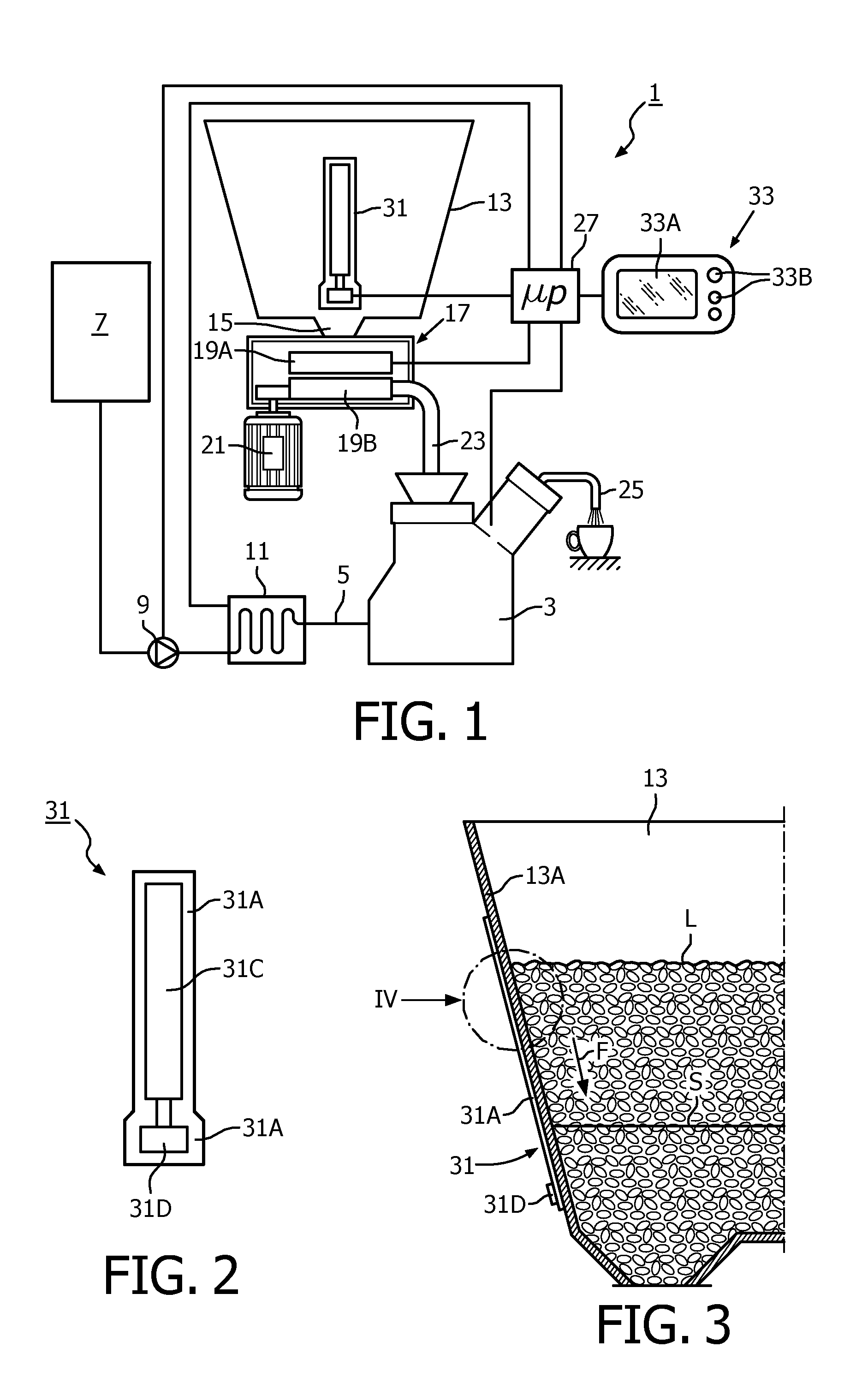Automatic coffee maker with sensor for detecting the quantity of coffee in the machine
a coffee maker and sensor technology, applied in the field of coffee machines, can solve the problems of increasing the cost and the size of the machine, the need of signalling, and the failure of the volumetric measurer,
- Summary
- Abstract
- Description
- Claims
- Application Information
AI Technical Summary
Benefits of technology
Problems solved by technology
Method used
Image
Examples
Embodiment Construction
[0031]In FIG. 1 the main components of an automatic coffee machine, thereto the present invention can be applied, are represented under the form of functional blocks. The representation of the several blocks is schematic, as they are known to the person skilled in the art. The representation of FIG. 1 is to be meant exclusively as an example, as the invention can be implemented in machines of various type, even for example without the grinder unit, as indicated above.
[0032]By referring to FIG. 1, the machine, designated as a whole with 1, includes a brewing unit 3, thereto, by means of a line 5, hot water under pressure is supplied. The water is picked up from a reservoir 7 through a pump 9 which makes the water picked up from the reservoir 7 to flow through a boiler 11. This is represented as boiler with instantaneous heating, that is wherein the cold water pumped from the pump 9 is heated during the boiler crossing. Therefore the boiler 11 can also be of other type, for example an...
PUM
 Login to View More
Login to View More Abstract
Description
Claims
Application Information
 Login to View More
Login to View More - R&D
- Intellectual Property
- Life Sciences
- Materials
- Tech Scout
- Unparalleled Data Quality
- Higher Quality Content
- 60% Fewer Hallucinations
Browse by: Latest US Patents, China's latest patents, Technical Efficacy Thesaurus, Application Domain, Technology Topic, Popular Technical Reports.
© 2025 PatSnap. All rights reserved.Legal|Privacy policy|Modern Slavery Act Transparency Statement|Sitemap|About US| Contact US: help@patsnap.com



